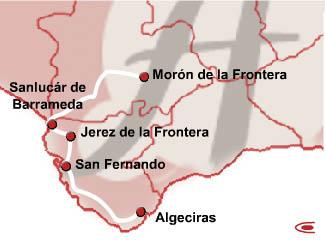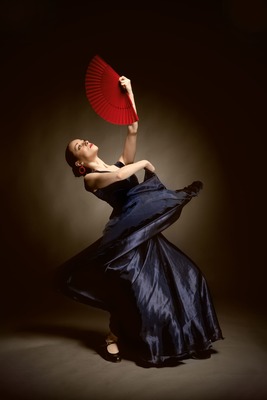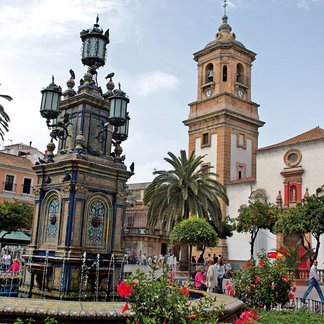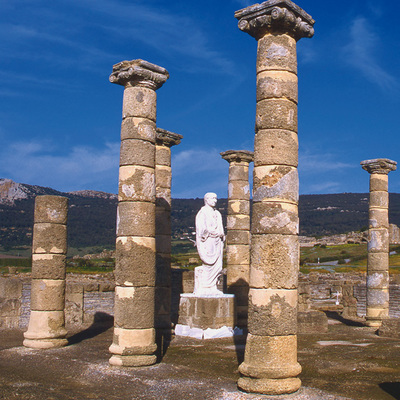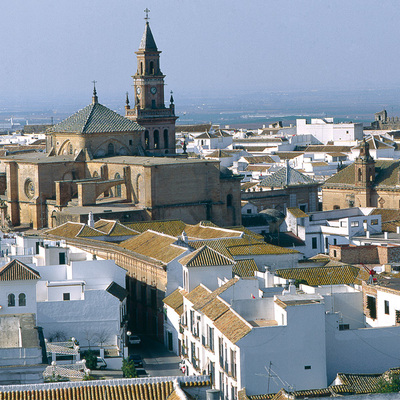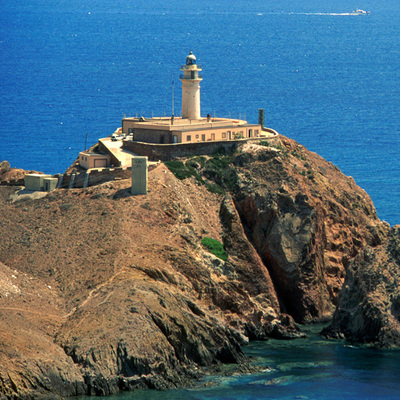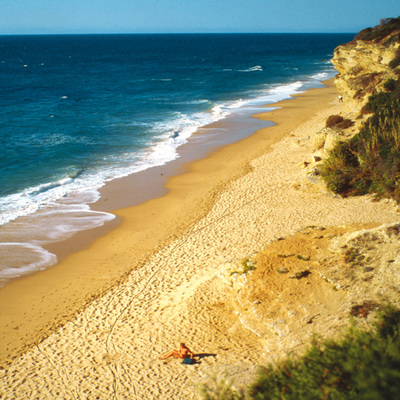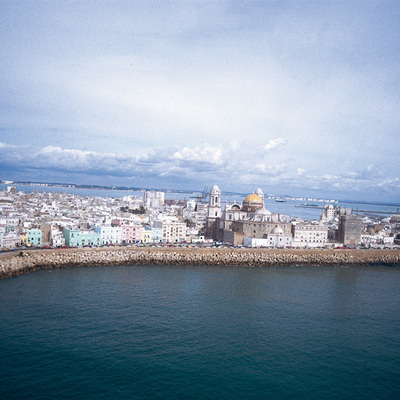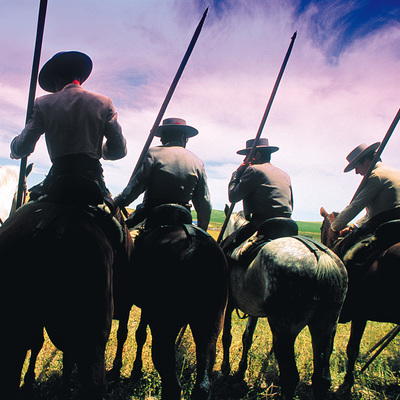The Bajañí Route
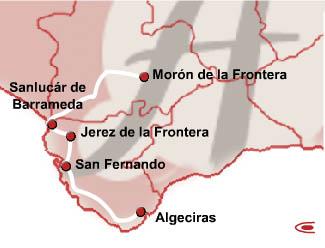
We are in Algeciras, where Paco de Lucía was born. So, this walk has to begin right where the master began life, in the modest district of El Rinconcillo. Specifically, Francisco Sánchez Gómez was born at number 7, San Francisco street.
A stroll around here, with a visit to his birthplace, will help us to understand just how hard it was for the genius from Algeciras to make his way from such limited beginnings.
But this voyage has many ports of call: The town hall square has a statue of the master; and the conservatory is named Paco de Lucía as a sign of the affection of his fellow townsmen.
A stop has to be made at the Cante Grande Society, a place where admiration for the genius is evident in every detail. It is also well worth visiting the La Almoraima farmhouse, in the outskirts of the town, where Paco was inspired to compose a piece in the bulería form with Arab influences, which continues to be considered today as one of the most beautiful in the history of the guitar. Paco de Lucía's impact is not limited to the town of his birth. A few kilometres away, in San Fernando, the guitarist left the other half of his legend: Camarón de la Isla.
Morón is a flamenco guitar setting par excellence. In the Los Alemanes tavern, you can feel the flamenco roots of this place, with its great collection of photographs of Diego del Gastor at crucial moments, as it was here that flamenco parties were held with most frequency. With a little fried chicken for company, you can visit the past, a time when the sound of fast strumming flamenco guitars rang out. Wild times!
The Isla de León route has to start at the entrance to the house where José Monge Cruz took his first steps before meeting Paco de Lucía to form one of the greatest duos in flamenco. We must go to the little lane of El Carmen, where Camarón tried and failed to become a bullfighter.
The next logical step is to visit the old forge of his brother Manuel, now closed but still to be visited. Here, in the courtyard, the legendary party took place where the mother of this genius sung about the "sinner" accompanied by Paco de Cepero and her son, which was captured by the television cameras to be preserved for posterity.
After a stop at the La Sacristía "güichi" (the local term for a bar), where Camarón would call in late at night on Good Friday to see his image of Jesus the Nazarene set off on the procession, we continue to another strategic point of this route: La Venta de Vargas.
Right in the square opposite, there is a statue dedicated to the singer, which signals what we will find inside the famous Cañaílla restaurant. It was here that Camarón forged his fist years as a singer, listening to Caracol, his brother Manuel, Niño de la Calzá and the owner of the restaurant, María Picardo.
Finally, Camarón's tomb remains to be visited. Always covered in flowers, as though he had passed away just a few days ago, the singer's tomb is in the local cemetery, where the bust of Camarón stands out to mark even more the figure of this artist without whose great contribution the guitar (he was also a player) of Paco de Lucía might have taken a different path.
And so we come to Jerez de la Frontera. Nothing more, nothing less. But, where can we go in Jerez to a get the feel of all of this? One of the most interesting places is definitely, the Arco de Santiago, a bar frequented by all of these masters, where the flamenco guitar and singers are at the heart of all conversation, the Taberna Flamenca, where El Torta and the Mijita family are regulars, and the Lagar del Tío Parrilla.
And at night, the theory is put into practice. "Manuel Morao and Jerez Gypsies" put on a show by request, in which the influence of this master of the guitar, in terms of ideas, stands above any other flamenco club in Santiago or San Miguel. Neither should you fail to visit Andalusia Flamenco Centre, in the Palacio de Pemartín, and Chair of Flamenco Studies, two points of reference for guitar study not to be missed, for the great wealth of documents in their archives.
Sanlúcar de Barrameda is the finishing point of this tour of the essence of the "deep" flamenco style. Isidro Sanlúcar, father of the master Manolo, of the great composer and player, Isidro, and of José Miguel Évora, was the source of the whole school of Sanlúcar. Just the right place to start a walk, from his old bakery in the Alto district, and to get to know the mysteries of his art. It is also important to visit the Conservatory, where Manolo Sanlúcar gave his all to introduce flamenco guitar as a discipline of study, and where his influence is very evident.
And, naturally, the route ends where this music is at its best, in the flamenco clubs. La Puerto Lucero in Sanlúcar is a great place to head for, as it is another place with a museum-like feel regarding the playing of the Muñoz Alcón family.
And from Algeciras to Sanlúcar runs an absolute guideline to the essence of the Bajañí style and its most direct associations from the last half century.

